The Battle of Linlithgow Bridge
…‘if thy body be torn to pieces , we shall have a part’
George Douglas - 1526
James
V was little more than a year old when his father died at
Flodden
in 1513. The following 13 years Scotland witnessed the turmoil of the regency
of Albany and the political in fighting that left the kingdom at the mercy of
the English and their followers north of the border.
Those who held
the king held the power and it was Archibald Douglas, Earl of Angus, who aspired
to be the kings guardian and in effect, his jailor. Margaret, the Queen dowager
fought a constant political battle to free her son, raising support among the
nobles for armed forays
Two such rescue
attempts ended at Linlithgow. The Earl of Arran attempted the first in January
1526. He raised 5000 men at the Queen’s bequest and mustered them at the Peel
but was obliged to disperse when the Queens party led by Earl of Moray was
delayed in arriving and the
Douglases
advanced in force from Edinburgh with the King in attendance. Arran fled, but
Moray arriving too late to stop the rout, declared for the King and promptly
swapped sides.
Eight months
later the Queen dowager persuaded the John Stewart the Earl of Lennox, the Earl
of Glencairn and Cardinal
Beaton to support her cause. Lennox raised an army over 10,000 and
marched on Edinburgh from his base in Stirling. By this time Archibald Douglas
had won over the Earl of Arran who was sent out to delay the march by mustering
the people of Linlithgow and the surrounding Hamilton lands. Much to his credit
Arran arrayed his followers at the strategically important Pace Hill overlooking
Linlithgow. He only had a small force composed mainly of the local Hamilton
retainers of approximately 2000 men. But Lennox, seeing the strength of this
defensive position had to rethink his plans.
Lennox looked to
out flank and destroy Arran before Douglas could arrive from Edinburgh with
reinforcements. Down stream proved impassable but his scouts found a ford at
Manuel Convent a mile upstream of the bridge. Lennox forced the crossing and
advanced on Arran’s flank. Arran saw the threat and arrayed his troops facing
south along the ridge of Pace Hill. Lennox’s attack was across the Avon, over
boggy ground and finally up hill, but he so nearly succeeded in dislodging
Arran’s outnumbered men. However time ran out for Lennox as Douglas
reinforcements arrived followed by the much reluctant King. It is said the King
dithered and made so many excuses that George Douglas, the King’s minder for
that day, declared ‘Before the enemy shall take thee from us, if thy body be
torn to pieces , we shall have a part’.
Many of the
Lennox men were killed either on the ridge or along the river Avon.
Glencairn was captured and Lennox himself was
wounded. He surrendered his sword to the Patrick Hamilton, the Laird
Of Pardovan, but in a
wonton act of rage, James Hamilton of Finnart
murdered Lennox. The location of this murder is commemorated with a cairn that
now stands on the entrance to the Kettlestoun
estate.
The king arrived
too late to save his would be rescuers. Instead he found Lennox, his favourite
uncle, dead and his supporters fleeing for their lives. The story goes that the
king retired to Linlithgow Palace for the night where he attended a victory
party but he appeared very sad and dolorous. Perhaps it was at this point that
he made his mind up to flee his Douglas captors as soon as he got the chance. In
1528 James V escaped from Edinburgh and joined his mother in Stirling. He called
together the nobles of Scotland and began his rule in earnest. The Douglas
family were chased out of Scotland.
If
you are looking for more information on this battle, the full account can be
found in the book ‘The Heart and the Rose’ published by
Partizan Press
http://www.caliverbooks.com/Partizan%20Press/partizan_pb.shtml
|
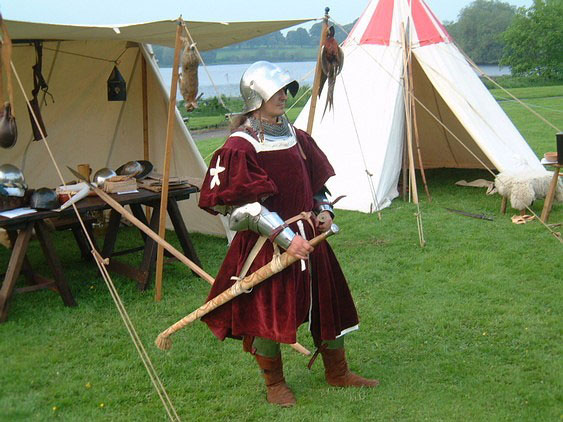 |
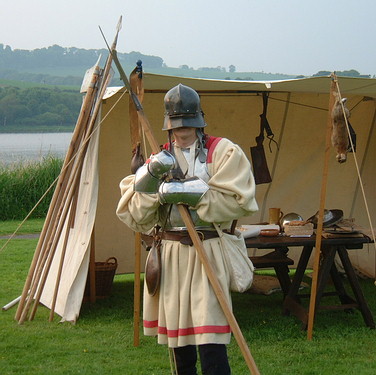 |
|
James Hamilton of Finnart |
A Billman in the service of the
Douglases |
|
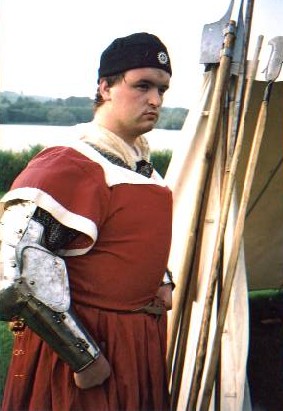
|
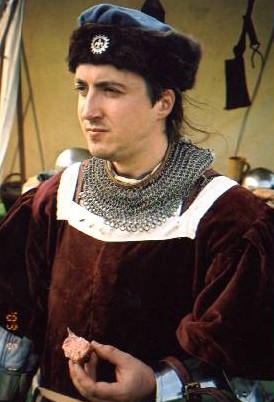
|
|
A retainer of the Hamilton family |
Lord Hamilton takes a light meal before the battle. |
|
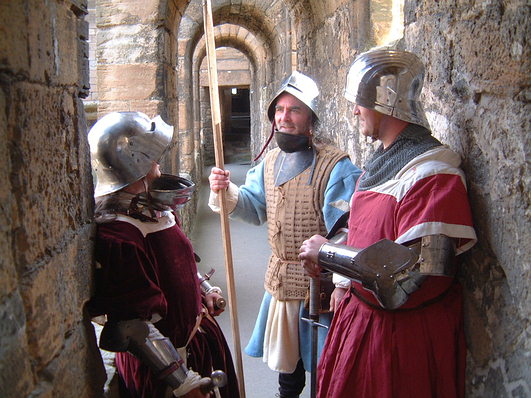 |
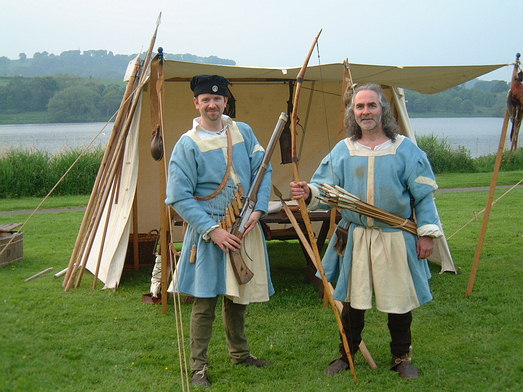 |
|
Lord Hamilton relaxes with some of
his men. |
Old and New: Both Bows and early handguns would have been
in use at Linlithgow Bridge. |
|
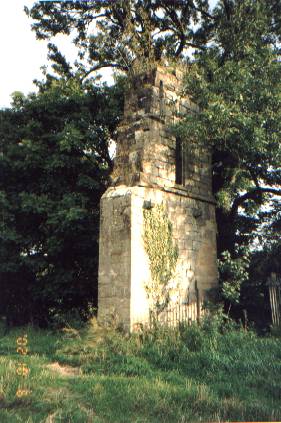
|
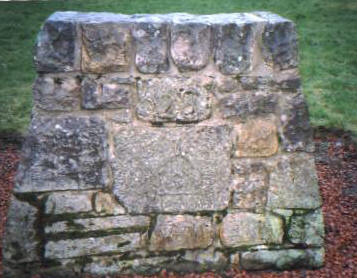
|
|
This gable end is all that remains of the Manuel Convent. |
The Cairn marking the site of the murder of Lennox. Oddly,
it is marked 1528 not 1526! |

A Composite photograph of the likely field of battle.
On the right is the viaduct in the centre manuel haugh farm and in the woods to
the centre left manuel convent, from this ridge you would have looked down on
the flank of Lennox's men advancing along the river from left to right
If you would like to walk the
battlefield of Linlithgow Bridge yourself, a guide can be found
here.
Jon Cooper is a member of the Battlefield
Trust and as such is their custodian for the Linlithgow Bridge battlefield site.
More details of the Trusts aims and workings can be found at
http://www.battlefieldstrust.com. Jon can be contacted on 01506 670 414 if
you would like more details on the battle.
BACK





